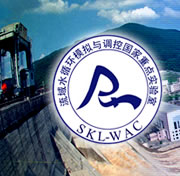《Earthquake Engineering and Structural Dynamics》杂志刊登“常规岸堤码头和改进岸堤码头的结构抗震分析”
作者:Maurizio M. Chiaramonte;Pedro Arduino; Dawn E. Lehman;Charles W. Roeder
刊物:《Earthquake Engineering and Structural Dynamics》,2013年,42卷第10期,1435—1450页
关键词:岸堤码头;港口;土-结构相互作用;基于性能设计;地震工程
摘要:岸堤码头是港口设施的关键部位,而港口设施又是美国经济的核心部分。一旦地震破坏了港口设施,美国经济的稳定性将会受到动摇。因此,港口工程要求在经受地震荷载作用后能够迅速恢复运行。之前的研究表明,过大的地震动和结构损伤可能会造成完整岸堤码头的破坏。后来的研究就局限在桩-码头连接处以及埋在土体里面的桩身结构。目前的研究是通过改进连接设计来减轻结构损伤的。本文旨在对常规岸堤码头和改进岸堤码头进行全抗震性能评估,并在此基础上建立了一系列有限元模型来模拟有桩基的码头设施。这些模型在减少桩-码头连接位移上存在差异。全应力分析方法利用在p-y, t-z, and Q-z方向上的地基-结构相互作用弹簧来得到地基响应的。不同的接触面单元将非线性框架单元和模拟码头的结构或子结构单元连接在一起。对三个不同地震水平进行非线性静力推覆法分析和动力时程分析。研究结果表明,数值分析的结果可以用来评价包括震后吊车损伤情况和港口停用时段在内的岸堤码头的抗震性能。
Seismic analyses of conventional and improved marginal wharves
Authors: Maurizio M. Chiaramonte;Pedro Arduino; Dawn E. Lehman;Charles W. Roeder
Journal: Earthquake Engineering and Structural Dynamics, Volume 42, Issue 10, pages1435-1450, August2013
Key words: marginal wharves; ports; soil–structure interaction; performance-based design; earthquake engineering
Abstract: Marginal wharves are key components in providing functionality of port facilities. Ports are central components of the US economy. Earthquake damage to a port can disrupt the economic stability. Therefore, port facilities must be able to quickly return to full operation shortly after a seismic event. Prior studies have shown that integrity of marginal wharves may be compromised by excessive soil movement and structural damage. The latter is often localized at pile-to-wharf connections and in the pile body buried within the soil. Recent research has resulted in an improved connection design that mitigates damage. This study was undertaken to evaluate the full seismic performance of marginal wharves including both conventional and damage-resisting connections. A series of finite element models of a representative pile-supported wharf facility were created. The models varied in their moment-resisting pile-to-wharf connections. A total-stress analysis approach was used to capture the soil response along with p–y, t–z, and Q–z soil–structure interaction springs. Validated connection interface elements were integrated with non-linear frame elements to simulate the marginal wharf structure and substructure. Non-linear static pushover and dynamic time history analyses, for three different hazard levels, were performed. The results of the numerical simulations were used to assess the performance of the marginal wharf including estimates of crane damage and port downtime.
原文链接:http://onlinelibrary.wiley.com/doi/10.1002/eqe.2280/abstract
翻译:徐金英;审核:安鹏

